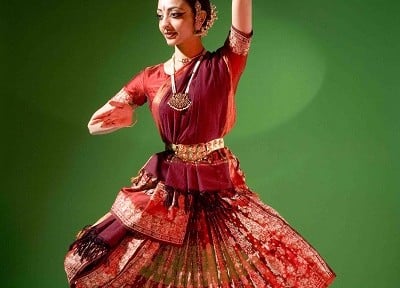Working towards a confluence in dance styles to tell shared stories
In our process of forming a viable sense of identity, one issue often seeks exploration: cultural identity versus perceived identity, or, in plain speak ‘Who am I myself and who am I to others?’
Renowned British Indian artist Seeta Patel is in Australia currently addressing this with a unique blend of classical Indian dance, contemporary dance and design.
Seeta’s one-woman dance show is in collaboration with renowned Australian artist Lina Limosani and Polish Australian Visual Dramaturge Dagmara Gieysztor.
A professional dancer for over a decade Seeta has worked with world-class artists and companies including DV8 Physical Theatre, Shobana Jeyasingh Dance Company, David Hughes Dance Company and Mavin Khoo. Her creative work has received numerous awards, bursaries and accolades. Seeta was on BBC, recently, as a judge, mentor and advisor for BBC Young Dancer Competition.
Seeta recently received an Arts Council England and British Council funding to come to Australia. Besides visiting Melbourne, Seeta will be conducting workshops with local artists in Sydney, Canberra and a residency in Mount Gambier as part of Country Arts South Australia. Her collaboration with choreographer and artist Lina and multidisciplinary artist Dagmara, is about airbrushed histories. Not Today’s Yesterday will explore notions of ‘pretty’ and ‘suitable’ rhetorical stories that are blurring and clouding our perceptions of the past.
With extensive experience in delivering classical Indian work to a western audience, Seeta is here to compare notes and share learning with Australian artists doing the same. Indian Link caught up with the Bharatanatyam artist to find out more about her project and her intent to forge new links between South Asian and Australian artists.

“I don’t know how it is in Australia but in the UK and Europe there is definitely this sense that classicism is a remit of the west. I try and describe that Bharatanatyam is also a classical form; the presentation is often in long form that can be watched like a Mozart concert or ballet. When it is mixed with other things and presented in short form you do not get to see the depth of it and I am really trying to challenge that,” said Seeta who has performed sell out shows in leading cultural venues like the Royal Opera House and Purcell Room.
Speaking on the status of Bharatanatyam in the age of contemporary dance, Seeta thinks that it has a relatively young history outside of India, compared to mainstream contemporary dance. There has been a transitional shift with bigger names like Akram Khan, Shobana Jeyasingh etc. and there have been huge leaps and bounds but there are still challenges to integrate into the main system. Diversity, or inequality in terms of gender and ethnic minority within the mainstream, is in the forefront in theatre, film, and dance and it is a big subject at the moment, according to Seeta.
“Bharatanatyam has a solid standing and crowd. All classical works have an inbuilt refinement process that is ongoing. It is developing in an inward way with an extra depth. A similar transition is happening in Bharatanatyam, albeit a bit slowly,” claimed Seeta.
“We as a community often undersell and underplay ourselves in order to fit in and that’s just as bad as being underplayed by external forces. It is important to be confident that we do not need to be validated purely by being a contemporary artist if that’s not what we are good at,” she continued.
When asked to shed light on her creative content Seeta claimed that her work is often based on a combination of digging inwards into the ocean and growing upwards into space. “My classical work remains within the classical aesthetic and spectrum, and I keep it pure. My contemporary work is more concepts-driven and an outward exploration. I am very political and an activist interested in creating dialogue and provoking thought about polemic subjects like post colonialism, especially being in the diaspora,” she said.
Seeta hopes to connect with local artists and further explore the classical and cultural scene in Australia.



